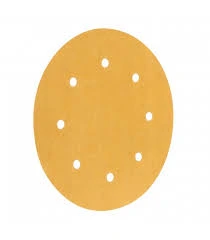| Colore | Personalizzata |
|---|---|
| Materiale | HDPE/LDPE/MDPE |
| Capacità | Personalizzata |
| misurare | |
| Forma della maniglia | Flat |
| Trattativa di superficie | Semplice/in rilievo |
| Campione | Disponibile |
Gli abrasivi lucidanti sono progettati per conferire alle superfici una finitura liscia e lucida. Ideali per un’ampia gamma di applicazioni, i prodotti lucidanti sono realizzati appositamente per rimuovere le imperfezioni, migliorare la lucentezza e ripristinare l’aspetto naturale di materiali come metallo, legno, plastica e vetro. Questi abrasivi forniscono un equilibrio eccezionale tra potenza di taglio e risultato liscio e lucidato, rendendoli perfetti sia per lavori di lucidatura leggeri che di finitura pesanti. Che tu stia lavorando su materiali automobilistici, mobili o industriali, gli abrasivi polacchi offrono finiture di qualità professionale che impressionano ogni volta.
Dove usarli:
sum is not simply random text. It has roots in a piece of classical Latin literature from 45 BC, making it over 2000 years old. Richard McClintock, a Latin professor at Hampden-Sydney College in Virginia, looked up one of the more obscure Latin words, consectetur, from a Lorem Ipsum passage, and going through the cites of the word in classical literature, discovered the undoubtable source. Lorem Ipsum comes from sections 1.10.32 and 1.10.33 of “de Finibus Bonorum et Malorum” (The Extremes of Good and Evil) by Cicero, written in 45 BC. This book is a treatise on the theory of ethics, very popular during the Renaissance. The first line of Lorem Ipsum, “Lorem ipsum dolor sit amet..”, comes from a line in section 1.10.32.
The standard chunk of Lorem Ipsum used since the 1500s is reproduced below for those interested. Sections 1.10.32 and 1.10.33 from “de Finibus Bonorum et Malorum” by Cicero are also reproduced in their exact original form, accompanied by English versions from the 1914 translation by H. Rackham.
sum is not simply random text. It has roots in a piece of classical Latin literature from 45 BC, making it over 2000 years old. Richard McClintock, a Latin professor at Hampden-Sydney College in Virginia, looked up one of the more obscure Latin words, consectetur, from a Lorem Ipsum passage, and going through the cites of the word in classical literature, discovered the undoubtable source. Lorem Ipsum comes from sections 1.10.32 and 1.10.33 of “de Finibus Bonorum et Malorum” (The Extremes of Good and Evil) by Cicero, written in 45 BC. This book is a treatise on the theory of ethics, very popular during the Renaissance. The first line of Lorem Ipsum, “Lorem ipsum dolor sit amet..”, comes from a line in section 1.10.32.
The standard chunk of Lorem Ipsum used since the 1500s is reproduced below for those interested. Sections 1.10.32 and 1.10.33 from “de Finibus Bonorum et Malorum” by Cicero are also reproduced in their exact original form, accompanied by English versions from the 1914 translation by H. Rackham.



